You may have read one of the latest articles about my sea trial and walkthrough in the marvelous RM 1180. Upon returning from that wonderful sailing day, the owner of the yacht performed a berthing maneuver which I haven´t seen up until then (although it may be an old hat for you) and I was so excited that I would love to tell you about this masterly performance. Why? Because it is a true easy to perform docking technique that is both safe, protects the precious hull from scratches and can be performed double handed with ease and is even due for a single-handed use. As my new yacht won´t have a bow thruster nor will I have a regular family-crew, this was of utter interest for me.
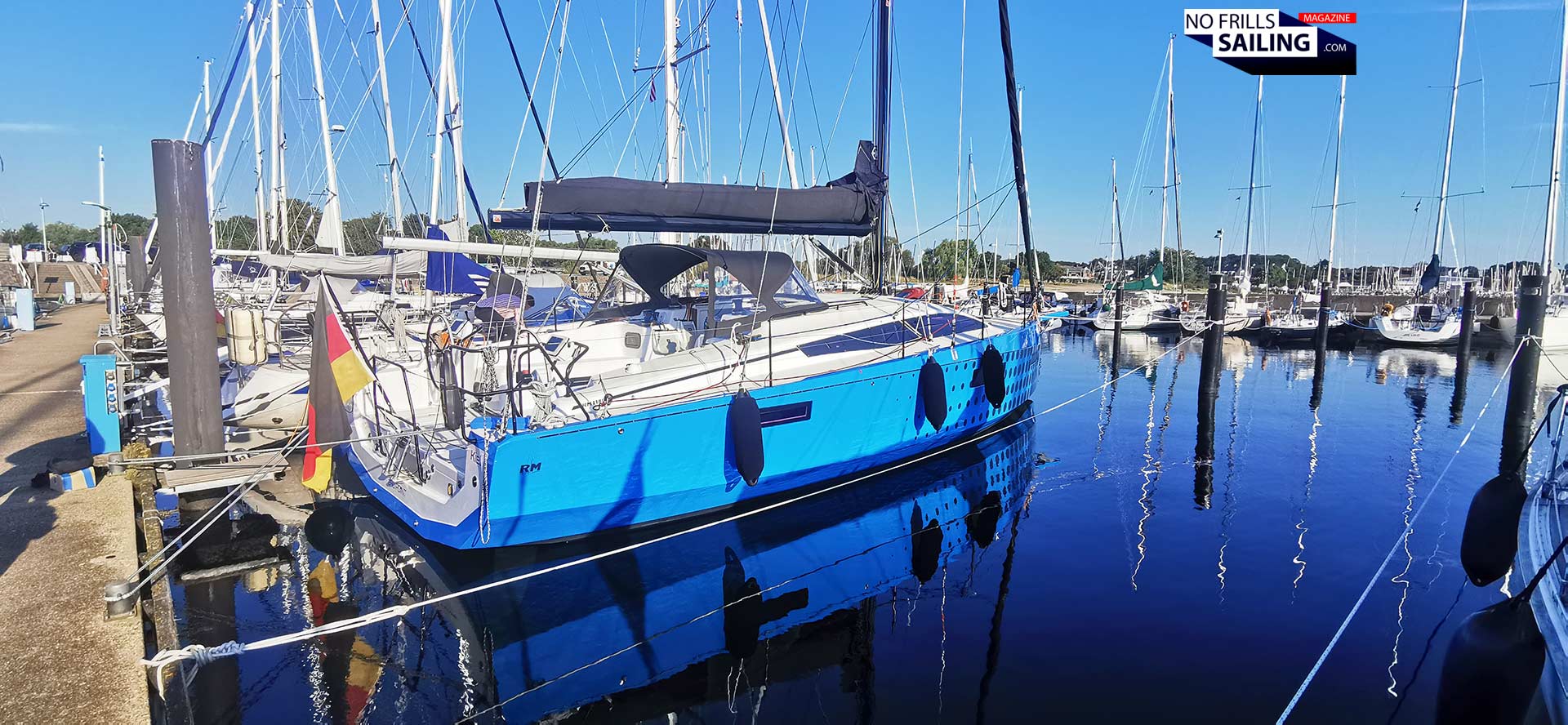
Besides, the situation at the RM´s berth as shown above is nothing new to many sailors: As modern yachts become more and more wider in the stern, berths don´t grow in width accordingly. Also, many marinas, as trying to fit in as many rows of pontoons as possible to create as many berths as possible, the passageways between the pontoons become also narrow. Even if your yacht is equipped with a bow thruster, it can get very serious if there´s a even a moderate wind blowing. This spring line mooring (with the stern line) is quite a nice alternative to perform the docking maneuver safely and in a calm way.
Step 1: Securing a spring aft line
Before we started the maneuver – still outside the marina – the skipper checks wind and determines a leeward and windward pile. It is preferrable to start the maneuver having your yacht´s bow pointing into the wind (if it is a soft to moderate breeze) so that the wind will help winding in your boat. If the wind is very strong, it may be wise to do it the other way round and count on the power of your engine, which plays a key role in this maneuver. In our case wind was light so we put the boat nose up into the wind. The skipper secured a very flat, long and flexible fender at the stern. Sorry that I didn´t take a picture, but google „flexible stern fenders for boats“ and you will see. By that, he protected the last 1,5 meters of the hull´s side. Because this is where the boat is pivoting around later.
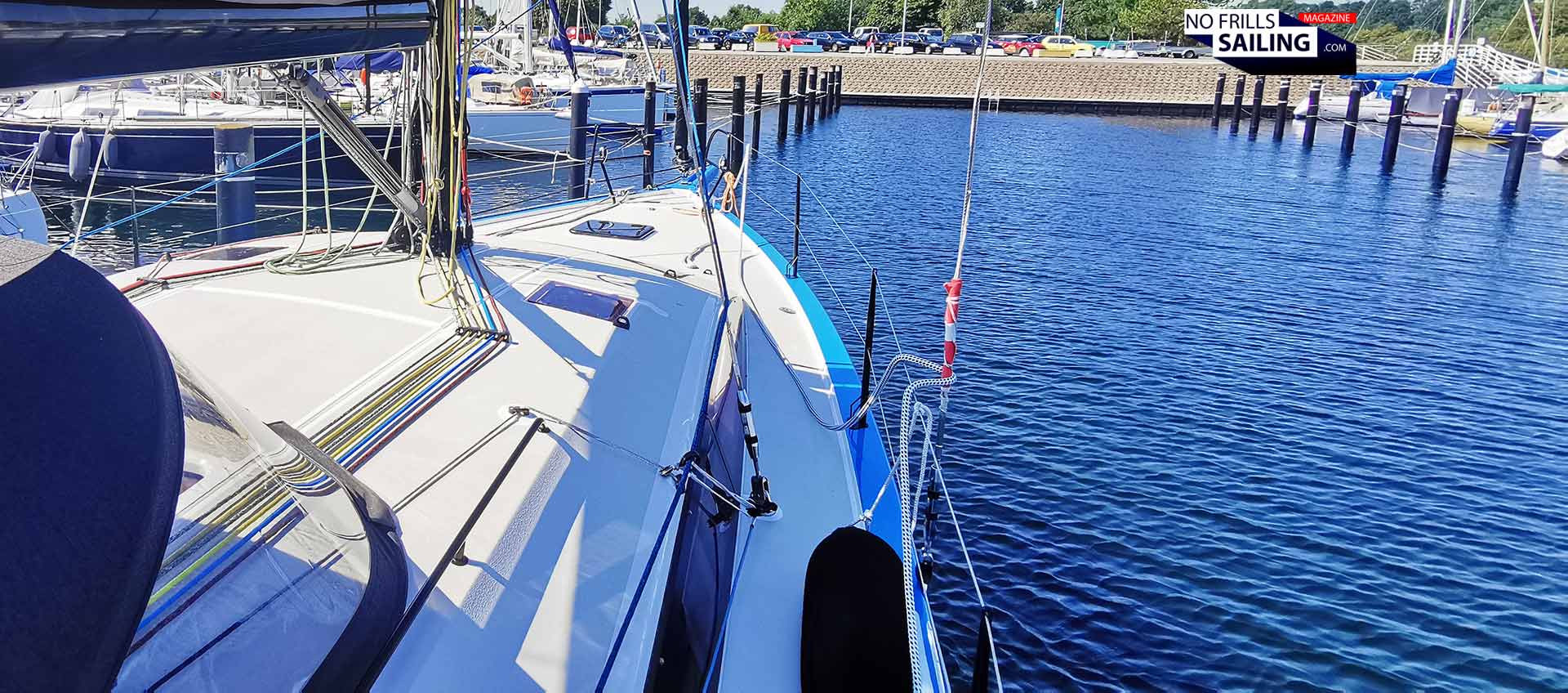
Nearing ourselves to the berth, he brought the boat very close to the row of pile moorings (remember: Nose into the wind). Whilst we made sure that we wouldn´t meddle with the bowsprits of other boats sticking out of their berths, the portside stern line (secured around te aft cleat) was put around the pile and brought back over the cleat. It was put tight, no more than 0.5 to max 1 meter of line between our boat and te pile.
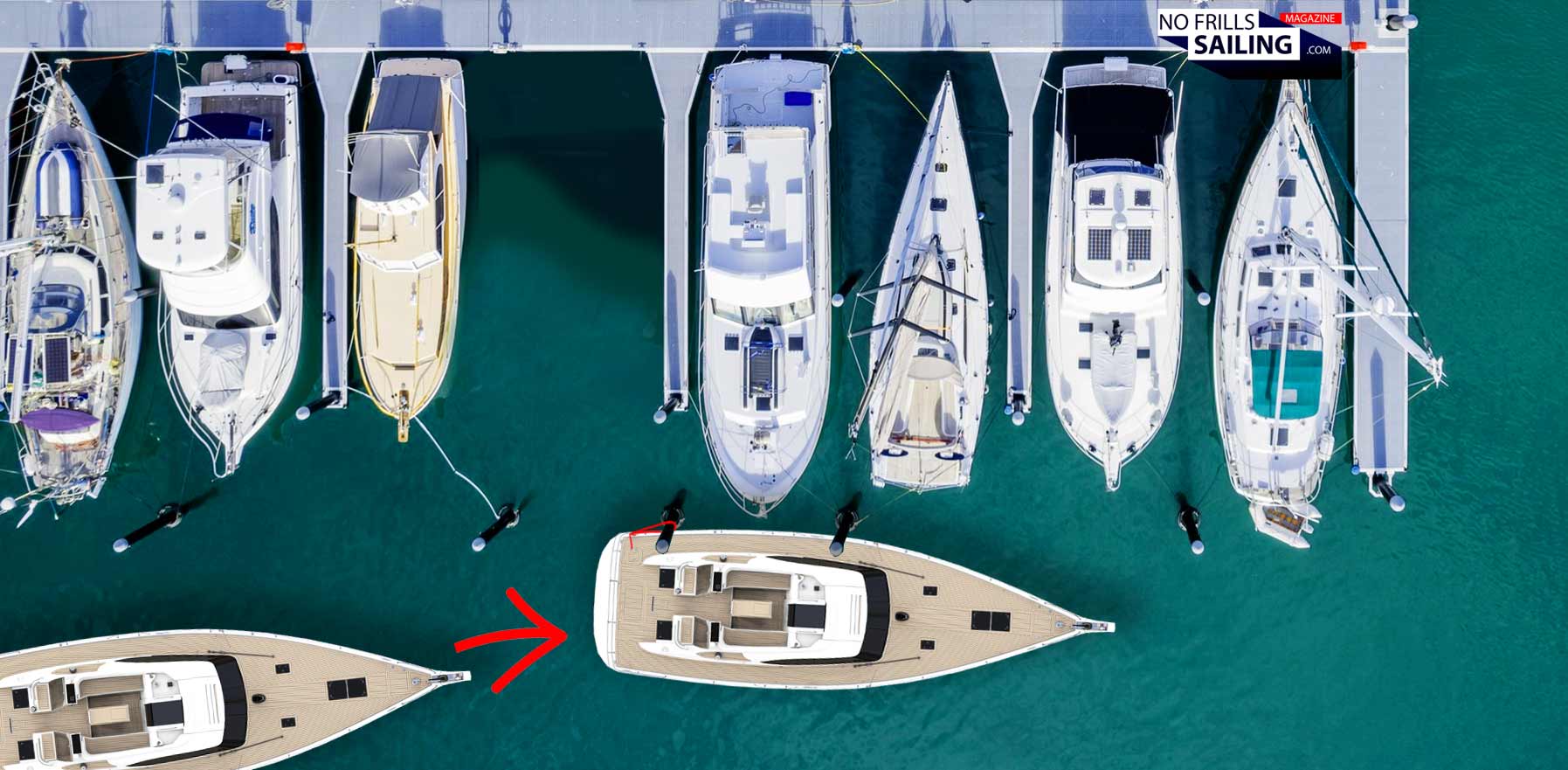
In the montage above you can see how I put my imaginary dream Oyster right next to the row of piles and a nice red stern line around the mooring pile. We are currently mooring in the wonderful Tauranga Marina of New Zealand where I found this nice drone picture, most suitable for this Photoshop-action. By the way, both the yacht and the marina fit wonderfully … But back to our landing operation. Now that the stern line is secured, all you need is a gentle push in the front away from the piles to start pivoting.
Step 2: Pivoting your boat around the windward pile
Abour the RM the skipper now simply put the engine into reverse while the guy at the stern line was ordered to hold tight. The propeller pushed the boat backward and took on the gentle push. Slowly but surely the boat started to pivot around the mooring pile to which the stern line had been secured.

Because of the fact that we did had put the boat´s bow pointing into the wind, the gentle breeze worked with us and additionally pressed against the hull, putting it more and more around. You can clearly see now why you won´t perform this is very strong winds because the pivoting may be too strong and rotation speed too high so that you´d overshoot. Without a bow thruster you couldn´t stop this motion. The more the boat turns, the less throttle is put into reverse.
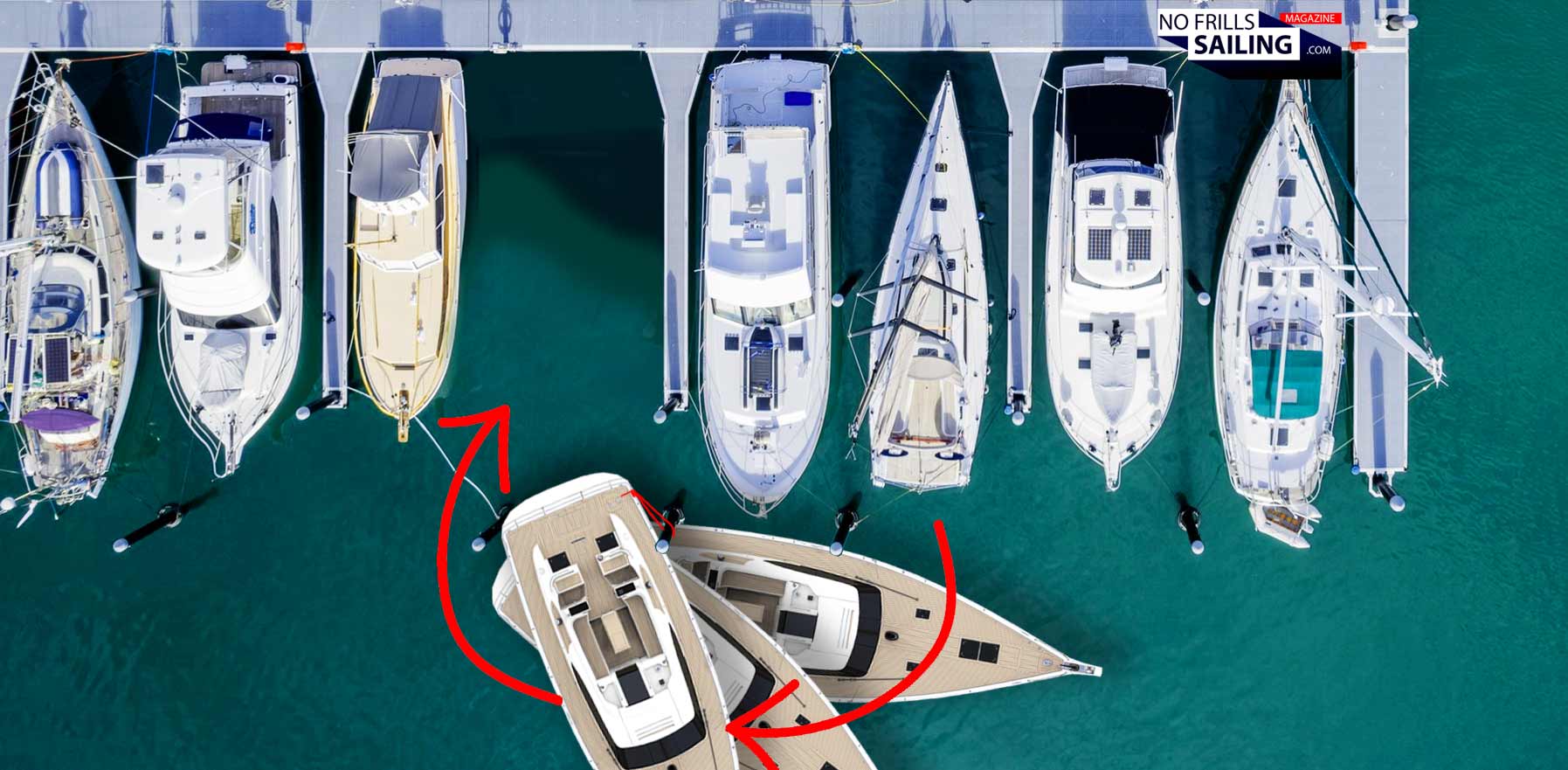
You should always have an eye to check the opposite mooring pile: In our case, the owner knew exactly how long the aft spring line should be made in order to squeeze his yacht inbetween the two piles. He knows his home berth. If you happen to perform this maneuver in an unknow place, always check if you boat fits through!
Step 3: Securing the bow lines
Once the stern part of the boat has passed by the mooring pile you have made it! Because of the fact that most modern yachts carry their biggest width from the shrouds all the back to the stern, you can be sure that the rest of the boat will easily fit the berth. Classic yachts, especially my needle-shaped Omega 42 have a slim stern section and only become wider around the shrouds: You know that I am a very glowing fan of rub rails, even temporary rub-lines only fitted when berthing are welcome!
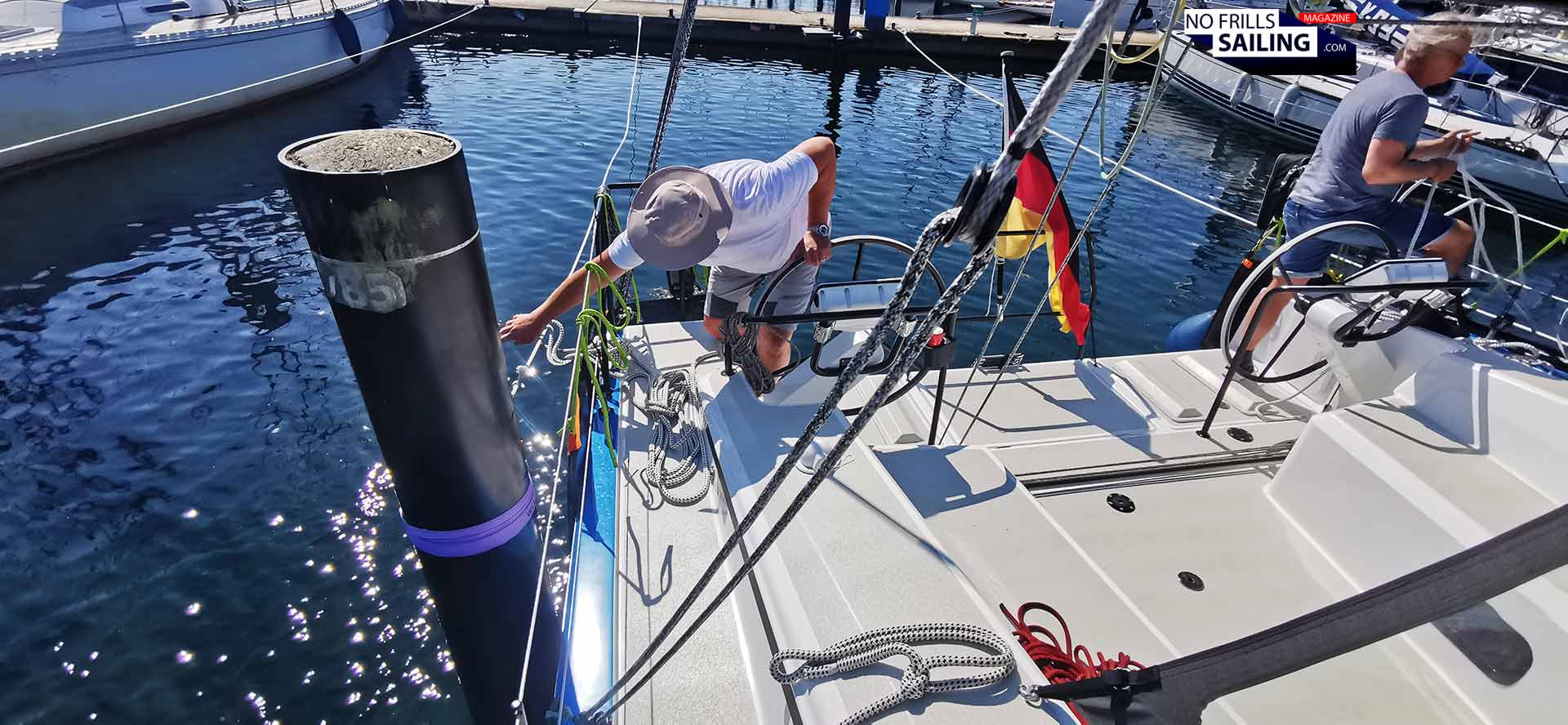
You want to have the boat pivoting inwards until you are aligned with the berth, perfectly positioned between the two mooring piles. If this is the case, depending on the wind, you unfasten the stern line and steam backwards slowly deeper into the berth. As you can see in the picture below, this looks absolutely sick! The RM 1180 just had only a handful centimeters of margin to either side and seen from afar I´d have judged she would never ever fit into that narow berth. But here we are …
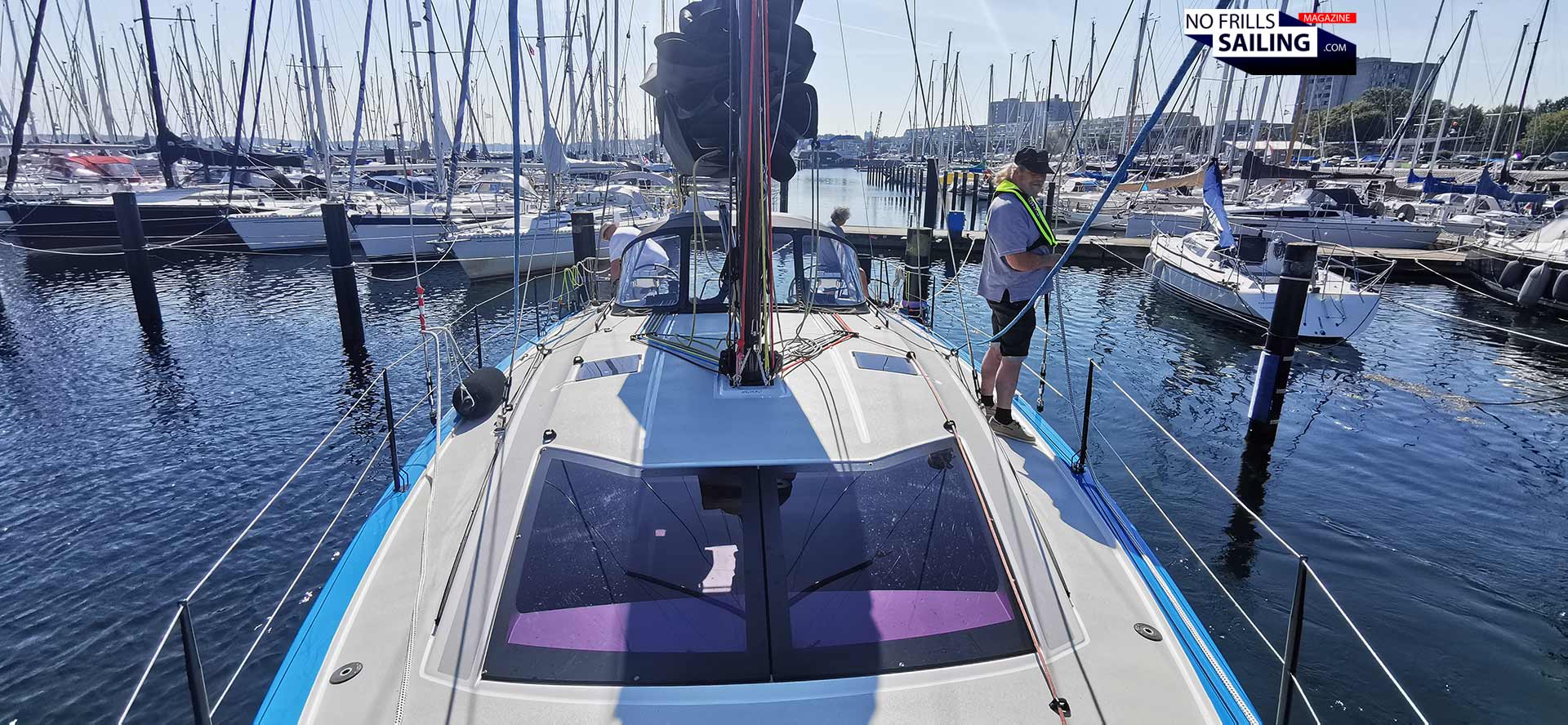
Stopping the pivoting rotaion and going backwards slowly, you can put the bow lines over the piles now. If you have them prepared in advance, that´s a matter of 10 seconds. If you have a crew, they will have more than enough time to do it. Having opened the stern reeling, the transom maybe secured by one or two fenders you go on proceeding backwards into the berth. Right now, wind won´t have any grab on your boat as the neighboring yachts will secure you.

Finally secure the bow lines provisionally, step onto the pontoon to fasten the stern lines first. Then pushing forward a bit with the engine, you may adjust and tighten the bow lines as well – done! The whole maneuver aboard eAU POINT (the name of the RM) lasted not more than one or two minutes. No yelling, no full-throttle action, no bow-thruster concert.
Calm & safe mooring of your yacht
And this is finally the beauty of this technique: If everybody knows what he is doing, this maneuver is performed in almost silence. The grace of the yacht pivoting herself into the berth is just eye candy! Choosing between putting your boat´s bow into or with the wind makes it possible to use this maneuver in both moderate to strong wind. I was really amazed having witnessed this.
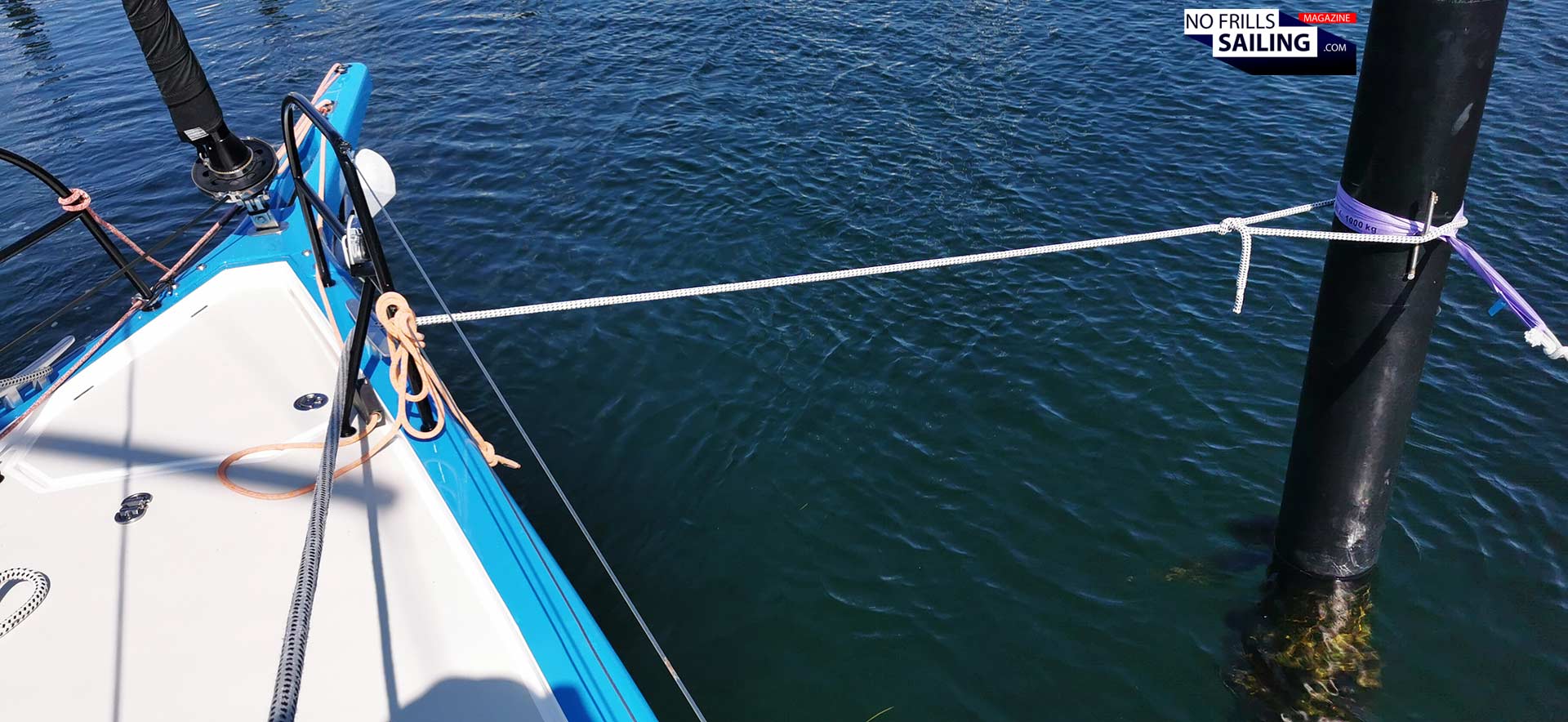
Of course, for my Omega 42 I will have to adjust this a bit. And so should you: Training the various methods of mooring should be done first in calm conditions if you are new on your yacht or fresh out of skipper certification. Upon taking over a newly bought boat, consulting a skilled on-board trainer for the whole crew is a strong advice. Besides, for the sake of peace at home, you may also consider to let your wife take over the helm, at least for the mooring maneuvers: But this is a totally different article though.
You might as well like to read these related articles:
Stern first single-handed berthing a Pogo 36
Choosing the right marina for your boat
The Tower of Babel: How not to tie your cleat hitch
